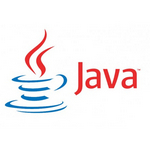java使用正则表达式匹配字符串的步骤:1、创建一个Pattern对象,使用“Pattern.compile()”方法来编译一个正则表达式;2、使用Matcher对象来进行匹配操作,可以通过调用“Pattern.matcher()”方法来创建;3、调用Matcher对象的各种方法来进行匹配操作,可以使用“matches()”、“find()”、“group()”。

在Java中,我们可以使用正则表达式(Regular Expression)来匹配字符串。正则表达式是一种描述字符串模式的语法,它可以用来检查字符串是否符合某种模式,或者从字符串中提取符合模式的部分。
在Java中,我们可以使用java.util.regex包中的Pattern和Matcher类来进行正则表达式的匹配操作。
首先,我们需要创建一个Pattern对象,它表示一个正则表达式。我们可以使用Pattern.compile()方法来编译一个正则表达式,例如:
String regex = "abc"; // 匹配abc字符串 Pattern pattern = Pattern.compile(regex);
然后,我们可以使用Matcher对象来进行匹配操作。Matcher对象是通过调用Pattern.matcher()方法来创建的,例如:
立即学习“Java免费学习笔记(深入)”;
String input = "abcdefg"; Matcher matcher = pattern.matcher(input);
接下来,我们可以调用Matcher对象的各种方法来进行匹配操作。常用的方法有:
matches():尝试将整个输入序列与正则表达式进行匹配。
find():在输入序列中查找下一个匹配的子序列。
group():返回与上次匹配操作匹配的输入子序列。
例如,我们可以使用matches()方法来判断一个字符串是否与正则表达式匹配:
String input = "abc"; boolean isMatch = matcher.matches(); // 返回true
或者,我们可以使用find()方法来查找输入字符串中的匹配子序列:
String input = "abcdefg"; boolean isFound = matcher.find(); // 返回true
如果我们想要提取匹配的子序列,可以使用group()方法:
String input = "abcdefg"; matcher.find(); // 匹配abc字符串 String match = matcher.group(); // 返回abc
除了上述方法,Matcher对象还提供了许多其他方法来进行更复杂的匹配操作,例如使用正则表达式的元字符(metacharacters)进行匹配,或者使用分组(grouping)来提取不同的子序列。
总结
Java提供了Pattern和Matcher类来支持正则表达式的匹配操作。我们可以使用Pattern.compile()方法创建一个Pattern对象,然后使用Matcher对象的方法来进行匹配操作。通过灵活运用正则表达式的语法,我们可以方便地实现字符串的匹配和提取。

java怎么学习?java怎么入门?java在哪学?java怎么学才快?不用担心,这里为大家提供了java速学教程(入门到精通),有需要的小伙伴保存下载就能学习啦!

Copyright 2014-2025 https://www.php.cn/ All Rights Reserved | php.cn | 湘ICP备2023035733号